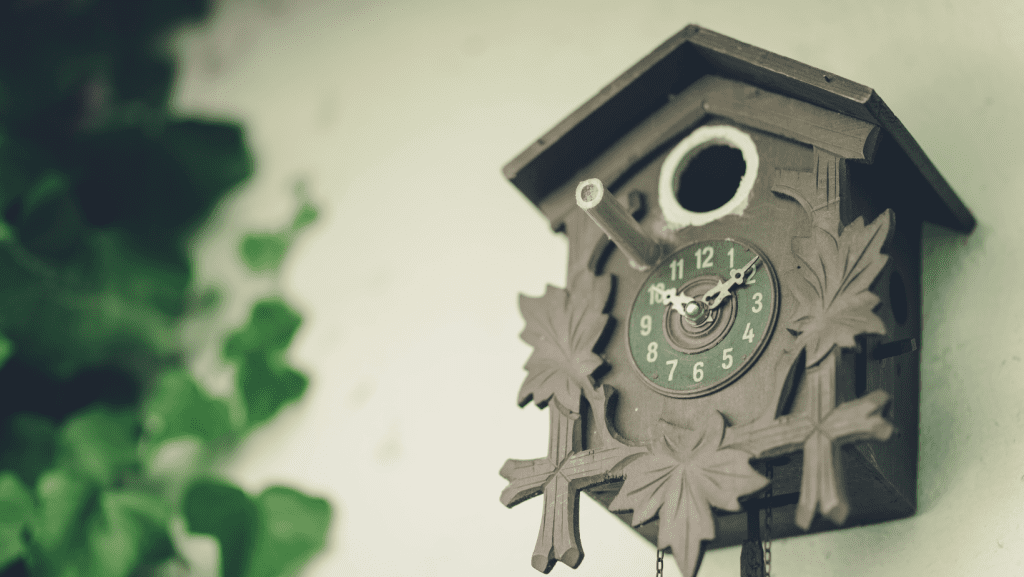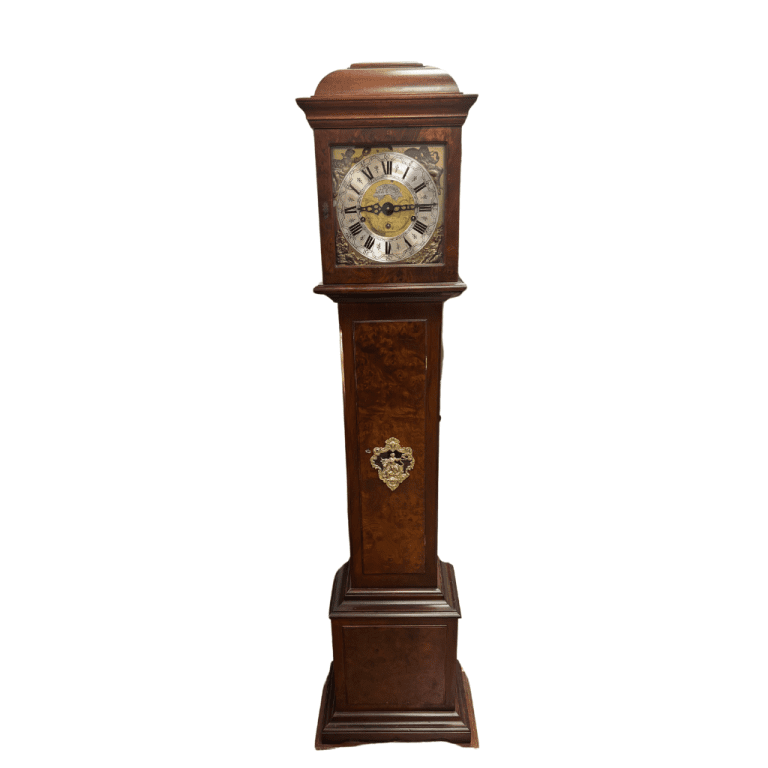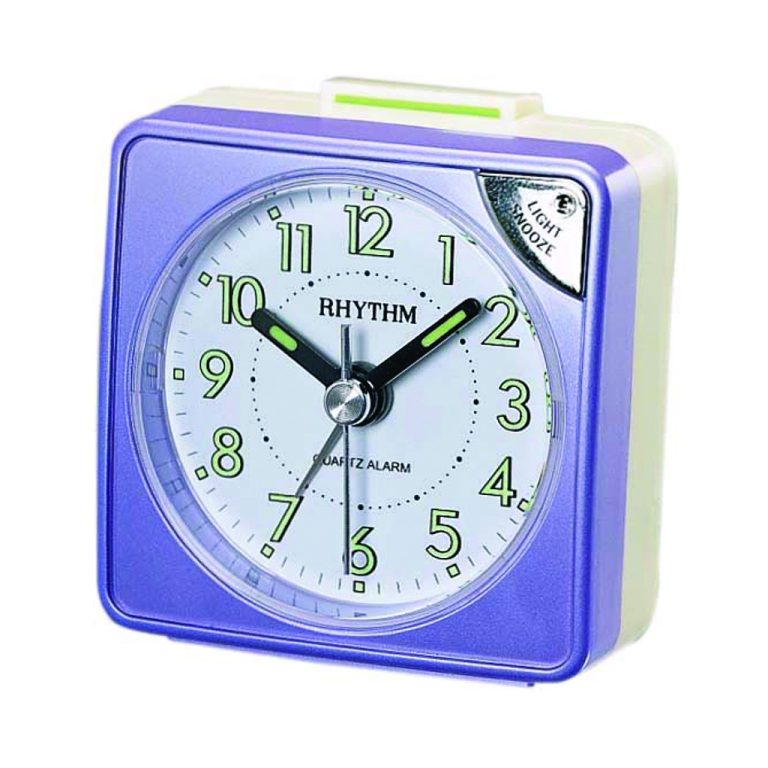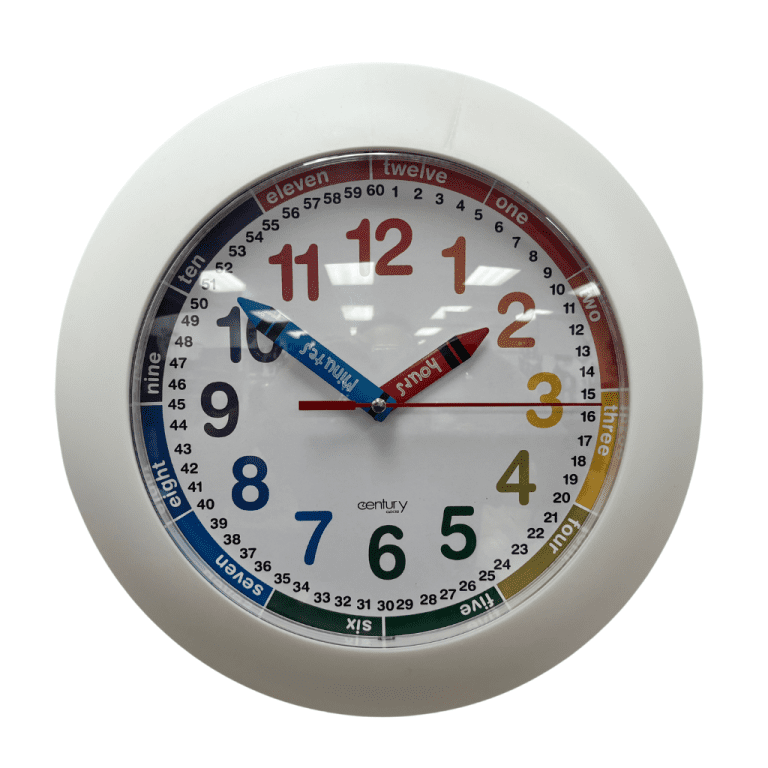Everybody has seen (or even heard) a cuckoo clock somewhere – perhaps you’re lucky enough to own one, or you’ve seen one while passing by an old antique store; perhaps your grandparent’s had one in their living-room and the sound of a cuckoo bird brings back fond memories of those times; or for those of us lucky enough to have visited the Black Forest in Germany, maybe you’ve visited one of the many cuckoo clockmakers workshops there and seen and heard hundreds of cuckoo clocks!
A cuckoo clock is a beautiful time-keeping instrument that is mechanical and musical in nature, but is also a beautiful moving work of art that is the antithesis of the age-old wood-working craft and is loved by many as much more than the sum of its parts. It may be seen as a lost relic from long ago by some, but there are more cuckoo clock designs today than any other time in history. While these days there are varieties of cuckoo clocks such as ‘modern‘ or ‘traditional battery-powered‘ cuckoo clocks, there still exists the very popular original mechanical ‘1-day‘ and ‘8-day‘ cuckoo clock styles which are timeless in their appearance and mechanical inner workings and many of which are still carved from their original material of linden wood from the Black Forest in Germany. Against the odds, the iconic cuckoo clock of yesteryear has survived the industrial age and is still a hand-crafted and prized possession in any home or modern space. We hope you enjoy our brief summary of its history.
THE ORIGIN OF THE CUCKOO CLOCK
Prior to mechanical clocks, many methods existed that ensured one could keep a relatively accurate track of time. The Egyptians had the sun-dial, tracking the movement of the sun over the sky with the use of large obelisks which cast a shadow on the ground. The Chinese had the ‘candle-clock’ which used the burning of a precisely-made candle to measure time. The ancient Greeks and also Arabic engineers had a way of tracking time using water and an ‘escapement mechanism’ which used a set of gears and weights. This was then a precursor to the pendulum clocks popularised around the 14th century in Europe, which led to the invention of the spring-based clocks of the 15th to 17th century, the basis of the clock as we know it today, which use springs, wheels and gears to keep a much more accurate measurement of time.
It is believed that during the 18th-century farmers in south-western Germany started making cuckoo clocks using logs from the Black Forest. This is widely believed to be the time and the place of the birth of the cuckoo clock. The story goes that during the winters, farmers would put their time to making these musical cuckoo clocks which could be sold to earn a living whilst their farms lay dormant.
But it is still unknown exactly who made the first-ever cuckoo clock. For long, the cuckoo clock has been attributed to Franz Anton Ketterer, a reputed clockmaker operating around the 1730’s from the Black Forest village of Schönwald (a village where many cuckoo clockmakers still operate workshops to this day). However, is also disputed that Michael Dilger & Matthäus Hummel may have had a hand in creating the first standard cuckoo clock in 1742. The debate still continues.
A GERMAN ICON
The cuckoo clock is a German icon, and still to this day, nearly all models are produced in the Black Forest region of Germany by many workshops operating under the same family names that stretch on for centuries in the cuckoo clock-making business. These names include ‘Trenkle Uhren‘, ‘August Schwer‘, ‘Hönes‘, ‘Hekas‘, ‘Engstler‘, ‘Rombach & Haas‘, and the now-closed ‘Hubert Herr‘. In addition, there also exists Swiss-made cuckoo clocks, such as those from the Swiss cuckoo clockmakers ‘Loetscher‘, which hold an equal historical charm as those made in Germany.
The modern clockmakers are as much dedicated to the craft of making cuckoo clocks as the early makers. The most famous design of cuckoo clocks is from the 19th century, which showcases an alpine house, called a ‘chalet-style cuckoo clock‘, that is adorned with items characteristic to the region such as wood-cutters, beer-drinkers in lederhosen, deer, bears and pine trees. Another early cuckoo clock style is called the ‘railway cuckoo clock‘ which is based off the original design of a ‘railway signal-mans’ house and is still available for those who prefer the beautifully ornate and ‘antique-style’ cuckoo clocks. Later on, several other styles also became famous, with intricate woodcarvings becoming a main style of cuckoo clocks, with the ‘birds-and-leaves cuckoo-clocks‘ and the ‘hunting-style cuckoo-clocks‘ becoming two of the most widely appreciated of the ‘carved-style cuckoo clocks‘ theme.
CUCKOO CLOCK MAKING – A DEMANDING CRAFT WITH A RICH HISTORY
The production of cuckoo clocks is a demanding craft and requires years of hard work & dedication to achieve perfection. During the Bavarian era of Germany, there were only a few cuckoo clockmakers. However, the craft spread quickly, and eventually, the Black forest area became the hub of cuckoo clock production. Every cuckoo clock made in the Black forest must meet the highest standards of the cuckoo clock and all genuine mechanical Black Forest cuckoo clocks come with this seal of approval from the Black Forest Clock Association (VdS) guaranteeing that you get a quality hand-made clock from one of the approved clock manufacturers.
What makes this craft very difficult is the wood selection and the care taken to make sure high-quality cuckoo clocks out made from this wood. Linden wood has always been the most suitable kind of wood for cuckoo clock manufacturing, chosen for the ease with which it can be carved by a master carver. The wood needs to be cut many years before the actual clock is made and, for perfect carving and manufacturing of a good quality cuckoo clock, the wood needs to be carefully dried for many years before it is worked on, to ensure it does not crack or splinter. The complete manufacturing involves a whole team of specialised craftspeople – wood-workers, painters, carvers and mechanics – to take the raw materials to their final finished piece. In addition to the artful outer clock housing, the manufacturing of the inner mechanical clockwork movement and the musical elements of the cuckoo clock is a tedious task and requires great skill and perfection from the mechanic and clockmaker. Most of the cuckoo clockmakers in the Black Forest area of Germany take to the craft as part of a family business or as part of the cottage industry that has become so iconic to that region. Therefore all of the knowledge of the craft of cuckoo clockmaking has moved through generations upon generations of families and towns-people within that region.
THE MODERN CUCKOO CLOCK
Whilst modern-day traditional cuckoo clockmakers are always updating their catalogue and designs of the traditional-style cuckoo clock, many traditional clockmakers are beginning to experiment with modern designs and materials, whilst still keeping the same mechanical 1-day and 8-day clock-work mechanism. This evolution of the cuckoo clock is most evident with the famous ‘Rombach & Haas’ cuckoo clock workshop in Germany pioneering the ‘modern mechanical cuckoo clock’ style.
In addition to this, many Italian cuckoo clockmakers (such as ‘Pirondini‘ and ‘Progetti‘) have taken the Italian design sensibilities and applied these to the outer appearance of the cuckoo clock to bring a style that is uniquely modern and design-driven. In the same category as them, the Japanese design company ‘Lemnos‘ is also at the forefront of the evolution of the cuckoo clock and has a range which is the perfect complement to the modern home.
It is unknown if the cuckoo clock will always be as prized and sort-after as it is today, or has been in the past. It may become as antique as the living-room piano or the stove-top kettle but we at Cuckoo Collections really hope not. The cuckoo clock brings together such a rich history, not only of the region of the Black Forest, but of the history of engineering, art, design and craft. We really hope that everyone gets to experience the sweet sound of a cuckoo clocks ‘cuckoo’ at least one time in their life.
Credited to:https://www.cuckoocollections.co.uk/














